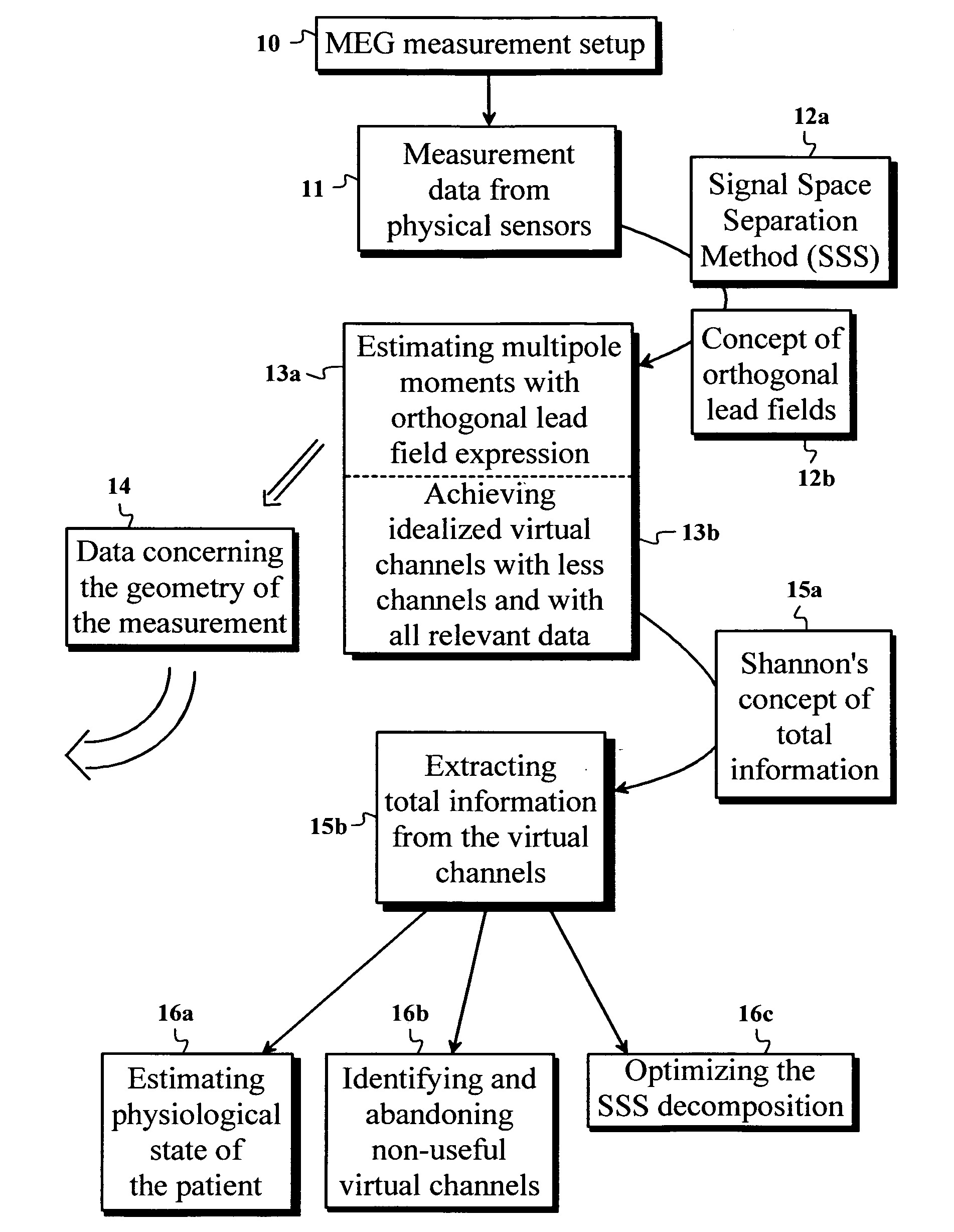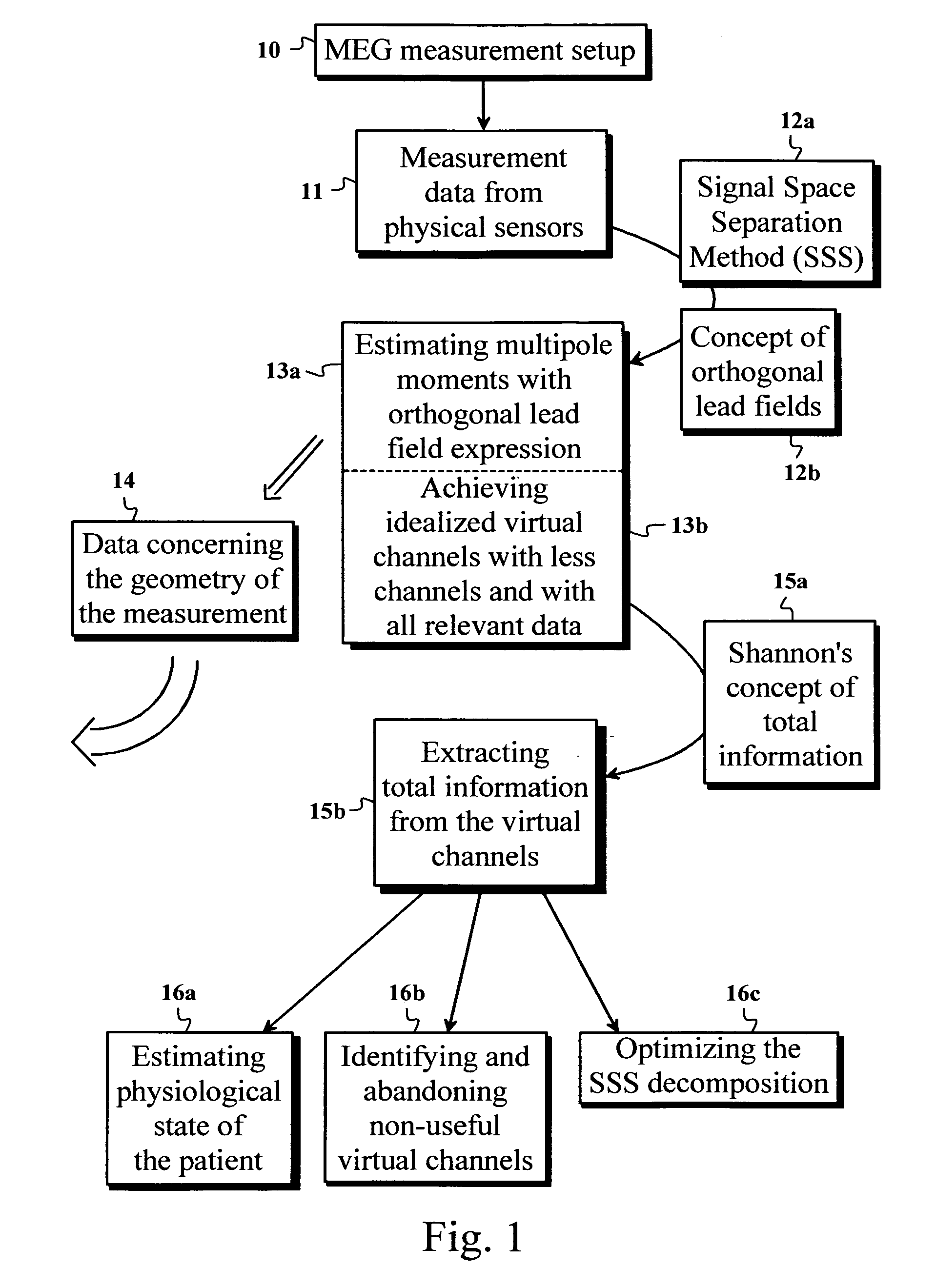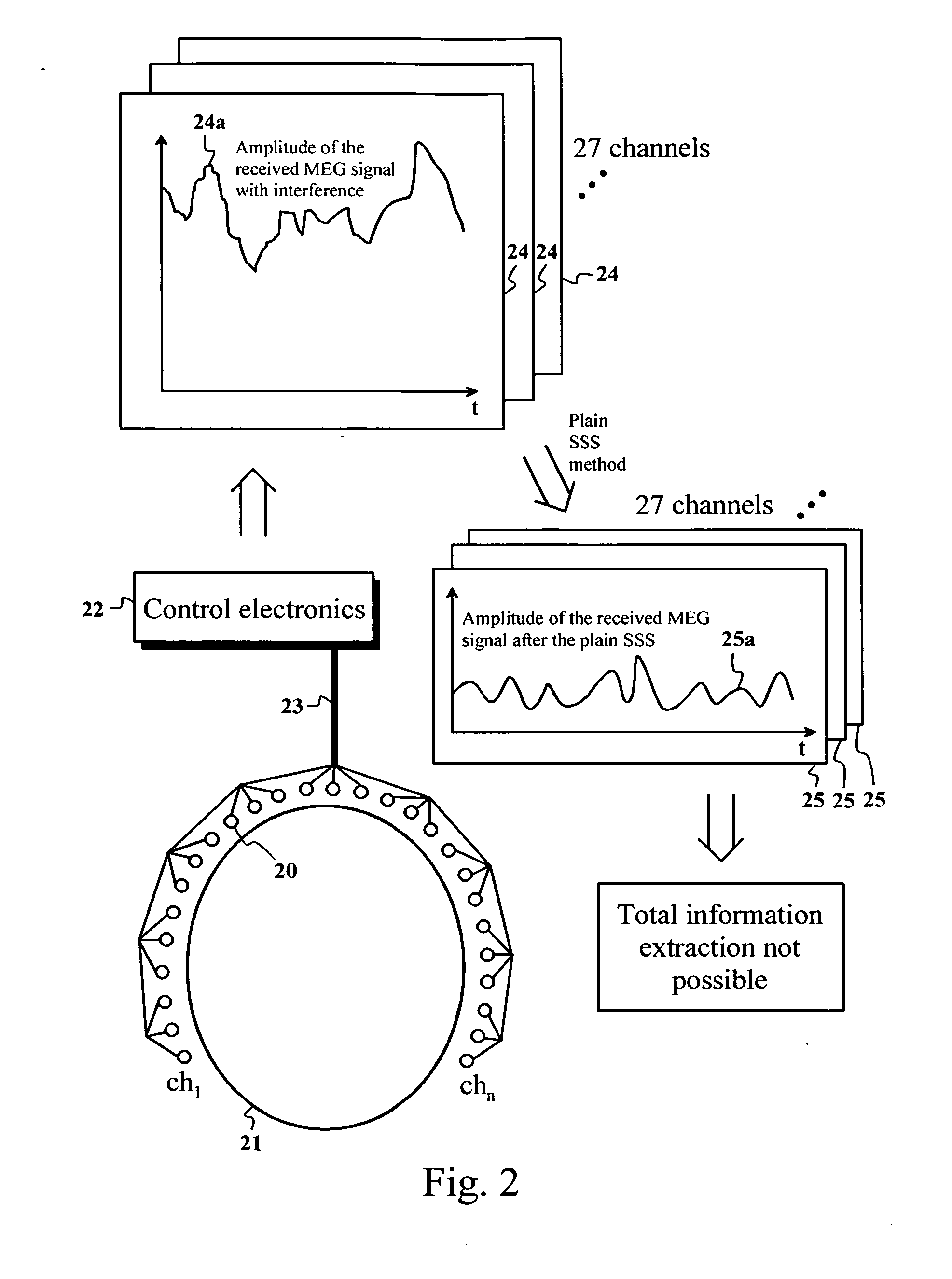Analysis of multi-channel measurement data using orthogonal virtual channels
- Summary
- Abstract
- Description
- Claims
- Application Information
AI Technical Summary
Benefits of technology
Problems solved by technology
Method used
Image
Examples
Embodiment Construction
[0040]Reference will now be made in detail to the embodiments of the present invention, examples of which are illustrated in the accompanying drawings.
[0041]The purpose of the present invention is to show an efficient way of idealizing the multi-channel MEG measurement data into device-independent form without any loss of relevant information. This is performed by transforming the measured MEG data into idealized virtual channels the number of which is smaller than the number of physical sensors.
[0042]FIG. 1 shows a flow diagram which represents the steps according to one embodiment of the invention. At first a setup 10 is created where the magnetoencephalography (MEG) apparatus is available for measuring biomagnetic signals from a patient. Typically these interesting biomagnetic signals originate in the patient's brain and their amplitude is very low compared to electromagnetic signals present in everyday environments. Thus, the setup of the MEG device includes very sensitive magne...
PUM
 Login to View More
Login to View More Abstract
Description
Claims
Application Information
 Login to View More
Login to View More - R&D
- Intellectual Property
- Life Sciences
- Materials
- Tech Scout
- Unparalleled Data Quality
- Higher Quality Content
- 60% Fewer Hallucinations
Browse by: Latest US Patents, China's latest patents, Technical Efficacy Thesaurus, Application Domain, Technology Topic, Popular Technical Reports.
© 2025 PatSnap. All rights reserved.Legal|Privacy policy|Modern Slavery Act Transparency Statement|Sitemap|About US| Contact US: help@patsnap.com



